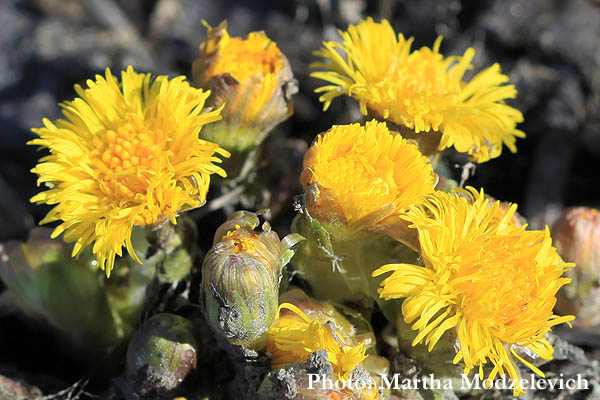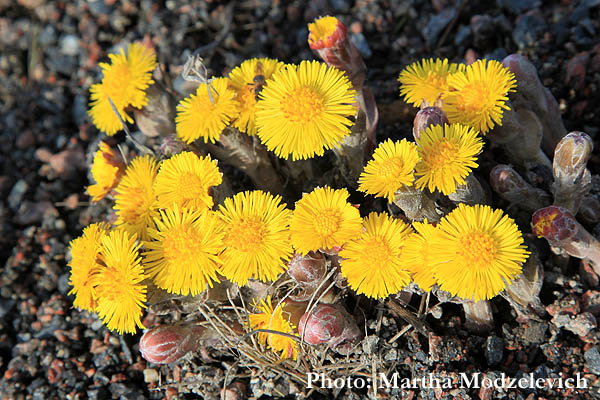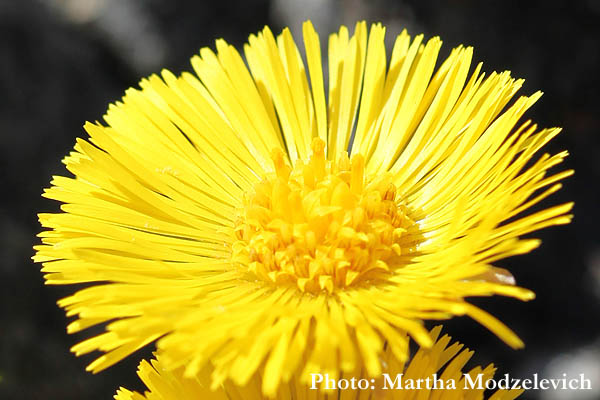
| Scientific name: | Tussilago farfara L. | |
| Swedish name: | Hästhov | |
| German name: | Huflattich | |
| Nederlandse naam: | Klein hoefblad | |
| English name: | Coltsfoot, baccy plant, poor-man's baccy, foal's-foot, cough wort, son-before-father | |
| Family: | Asteraceae, Compositae, Korgblommiga |

|
| Life form: | Perennial species that arises from rhizomes | |
| Stems: | Height 5–30 cm, unbranched, white-felted | |
| Leaves: | Rosette, large, animal hooves shape, with thick felt-covered undersides | |
| Flowers: | Yellow, closes at night and in poor weather | |
| Flowering Period: | March-April | |
| Fruits: | Cypsela (dry single-seeded fruit) crowned by a tuft of unbranched hairs | |
| Habitat: | Throughout the country, Coast, pastureland, meadows, farmland, settlements |

Derivation of the botanical name: Tussilago from the latin Tussis for "cough", and hints at the widespread smoking of the dried leaves in folk-medicine to cure coughs. It is still smoked in some areas today as herbal tobacco, and the names ‘baccy plant' and ‘poor-man's-baccy' survive in some parts of Britain. Farfara, Pliny, is a Latin name for the plant. The name ‘son-before-father' refers to the fact that the yellow flowers held on purplish woolly shoots are often present before the leaves. The name colt's or foal's-foot refers to the fact that the leaves are similar in shape to animal hooves.

|